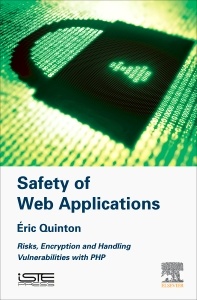Description
Safety of Web Applications
Risks, Encryption and Handling Vulnerabilities with PHP
Author: Quinton Eric
Language: English
Subjects for Safety of Web Applications:
Support: Print on demand
Description
/li>Contents
/li>Readership
/li>Biography
/li>Comment
/li>
Safety of Web Applications: Risks, Encryption and Handling Vulnerabilities with PHP explores many areas that can help computer science students and developers integrate security into their applications. The Internet is not secure, but it's very friendly as a tool for storing and manipulating data. Customer confidence in Internet software is based on it's ability to prevent damage and attacks, but secure software is complicated, depending on several factors, including good risk estimation, good code architecture, cyphering, web server configuration, coding to prevent the most common attacks, and identification and rights allocation.
2. Estimating Risk
3. Encryption and Web Server Configuration
4. Threats and Protecting Against Them
5. Managing User Logins and Assigning Permissions
6. Using the MVC Model to Structure the Application
7. Implementing a Suitable Technical Platform and Testing the Application
All persons which want to introduce security in software development (PHP or other)
- Helps computer science students and developers integrate security into their applications
- Includes sections on risk estimate, MVC modeling, the cyphering (certificates, bi-keys, https protocol)
These books may interest you

Securing PHP Apps 24.25 €

Client-Side Attacks and Defense 43.92 €

Web SecurityA WhiteHat Perspective 264.58 €

